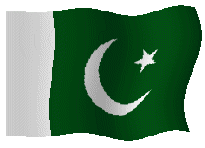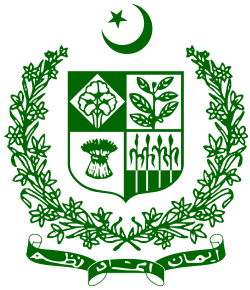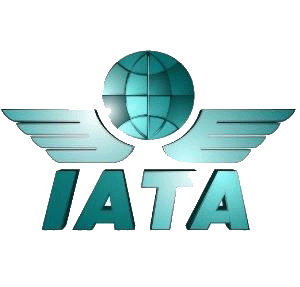 |
||||||
|---|---|---|---|---|---|---|
| ||||||
| |
|---|
| |
| |
| |
| |
| |
| |
| |
| |
 |
|---|
 |
 |
 |
 |
About DubaiDubai is one of the seven emirates and the most populous city of the United Arab Emirates (UAE). It is located along the southern coast of the Persian Gulf on the Arabian Peninsula. The Dubai Municipality is sometimes called Dubai city to distinguish it from the emirate. Written accounts document the existence of the city for at least 150 years prior to the formation of the UAE. Dubai shares legal, political, military and economic functions with the other emirates within a federal framework, although each emirate has jurisdiction over some functions such as civic law enforcement and provision and upkeep of local facilities. Dubai has the largest population and is the second largest emirate by area, after Abu Dhabi. Dubai and Abu Dhabi are the only two emirates to possess veto power over critical matters of national importance in the country's legislature. Dubai has been ruled by the Al Maktoum dynasty since 1833. Dubai's current ruler, Mohammed bin Rashid Al Maktoum, is also the Prime Minister and Vice President of the UAE. The emirate's main revenues are from tourism, trade, real estate and financial services. Revenues from petroleum and natural gas contribute less than 6% (2006) of Dubai's US$ 37 billion economy (2005). Real estate and construction, on the other hand, contributed 22.6% to the economy in 2005, before the current large-scale construction boom. Dubai has attracted attention through its real estate projects and sports events. This increased attention, coinciding with its emergence as a world business hub, has highlighted labor and human rights issues concerning its largely foreign workforce. GeographyDubai is situated on the Persian Gulf coast of the United Arab Emirates and is roughly at sea level (16 m/52 ft above). The emirate of Dubai shares borders with Abu Dhabi in the south, Sharjah in the northeast, and the Sultanate of Oman in the southeast. Hatta, a minor exclave of the emirate, is surrounded on three sides by Oman and by the emirates of Ajman (in the west) and Ras Al Khaimah (in the north). The Persian Gulf borders the western coast of the emirate. Dubai is positioned at 25°16'11?N 55°18'34?E25.2697°N 55.3095°E and covers an area of 4,114 km² (1,588 mi²). Dubai lies directly within the Arabian Desert. However, the topography of Dubai is significantly different from that of the southern portion of the UAE in that much of Dubai's landscape is highlighted by sandy desert patterns, while gravel deserts dominate much of the southern region of the country. The sand consists mostly of crushed shell and coral and is fine, clean and white. East of the city, the salt-crusted coastal plains, known as sabkha, give way to a north-south running line of dunes. Farther east, the dunes grow larger and are tinged red with iron oxide. The flat sandy desert gives way to the Western Hajar Mountains, which run alongside Dubai's border with Oman at Hatta. The Western Hajar chain has an arid, jagged and shattered landscape, whose mountains rise to about 1,300 meters in some places. Dubai has no natural river bodies or oases; however, Dubai does have a natural inlet, Dubai Creek, which has been dredged to make it deep enough for large vessels to pass through. Dubai also has multiple gorges and waterholes which dot the base of the Western Al Hajar mountains. A vast sea of sand dunes cover much of southern Dubai, which eventually lead into the desert known as The Empty Quarter. Seismically, Dubai is in a very stable zone — the nearest seismic fault line, the Zargos Fault, is 120 km from the UAE and is unlikely to have any seismic impact on Dubai. Experts also predict that the possibility of a tsunami in the region is also minimal because the Persian Gulf waters are not deep enough to trigger a tsunami. The sandy desert surrounding the city supports wild grasses and occasional date palm trees. Desert hyacinths grow in the sabkha plains east of the city, while acacia and ghaf trees grow in the flat plains within the proximity of the Western Al Hajar mountains. Several indigenous trees such as the date palm and neem as well as imported trees like the eucalypts grow in Dubai's natural parks. The houbara bustard, striped hyena, caracal, desert fox, falcon and Arabian oryx are common in Dubai's desert. Dubai is on the migration path between Europe, Asia and Africa, and more than 320 migratory birds pass through the emirate in spring and autumn. The waters of Dubai are home to more than 300 species of fish, including the hammour. Dubai Creek runs northeast-southwest through the city. The eastern section of the city forms the locality of Deira and is flanked by the emirate of Sharjah in the east and the town of Al Aweer in the south. The Dubai International Airport is located south of Deira, while the Palm Deira is located north of Deira in the Persian Gulf. Much of Dubai's real estate boom is concentrated to the west of the Dubai Creek, on the Jumeirah coastal belt. Port Rashid, Jebel Ali, Burj Al Arab, the Palm Jumeirah and theme based free zone clusters such as Business Bay are all located in this section. Five main routes — E 11 (Sheikh Zayed Road), E 311 (Emirates Road), E 44 (Dubai-Hatta Highway), E 77 (Dubai-Al Habab Road) and E 66 (Oud Metha Road) — run through Dubai, connecting the city to other towns and emirates. Additionally, several important intra-city routes, such as D 89 (Al Maktoum Road/Airport Road), D 85 (Baniyas Road), D 75 (Sheikh Rashid Road), D 73 (Al Dhiyafa Road), D 94 (Jumeirah Road) and D 92 (Al Khaleej/Al Wasl Road) connect the various localities in the city. The eastern and western sections of the city are connected by Al Maktoum Bridge, Al Garhoud Bridge, Al Shindagha Tunnel, Business Bay Crossing and Floating Bridge. ClimateDubai has a hot and, at times, humid climate (drier during extreme heat) with many months recording temperatures of over 40 °C (104 °F). The highest recorded temperature in Dubai is 47.3 °C (117.1 °F), and the lowest recorded temperature is 7 °C (45 °F). Rainfall is generally light, with a mean of about 150 millimetres (6 in) per year; precipitation is usually centered around the months of January, February and March. However, heavy rain is not uncommon in Dubai during the winter months and January 2008 saw a record of 120 mm (or 5") of rain falling in just 24 hours, The mean humidity in Dubai is approximately 60% and is higher during the cooler winter months. TransportationDubai International Airport (IATA: DXB), the hub for Emirates Airline, services the city of Dubai and other emirates in the country. The airport served a total of over 37 million passengers and handled over 1.8 million tonnes of cargo in 2008. The Dubai International Airport ranked 13th among international airports for total cargo traffic in 2007. A third terminal and a new concourse opened in October 2008, serving Emirates flights, and is the single largest building in the world by floor space. The new terminal will be dedicated to Emirates Airline and will fully support the new Airbus A380. The development of Dubai World Central International Airport, currently under construction in Jebel Ali, was announced in 2004. The first phase is expected to be completed by 2008, and once operational the new airport will host foreign airlines and emirates with an exclusive terminal for them. Dubai has a large bus system that services 69 routes and transported over about 90 million people in 2006. The Road and Transport Authority (RTA) announced in 2006 that an additional 620 new buses will be added to its fleet of 170 double decker buses. Although the main mode of transportation in Dubai is by private vehicle, Dubai also has an extensive taxi system. A $3.89 billion Dubai Metro project is under construction for the emirate. The Metro system is expected to be partially operational by 2009 and fully operational by 2012. The metro will comprise four lines: the Green Line from Al Rashidiya to the main city center and the Red Line from the airport to Jebel Ali. It also has a blue and a purple line The Dubai Metro (Green and Blue Lines) will have 70 kilometers of track and 43 stations, 33 above ground and ten underground. One of the more traditional methods of getting across Bur Dubai to Deira is through abras, small boats that ferry passengers across the Dubai Creek, between abra stations in Bastakiya and Baniyas Road. In July 2007, the Salik road toll network was installed on Sheikh Zayed Road and on Al Garhoud bridge; the tolling stations are fully automated and collect toll of AED 4 (US$ 1.08) per transit. |
|---|
 |
|||||||||||||||||||||||||||||||||||||
|---|---|---|---|---|---|---|---|---|---|---|---|---|---|---|---|---|---|---|---|---|---|---|---|---|---|---|---|---|---|---|---|---|---|---|---|---|---|
|
|||||||||||||||||||||||||||||||||||||







